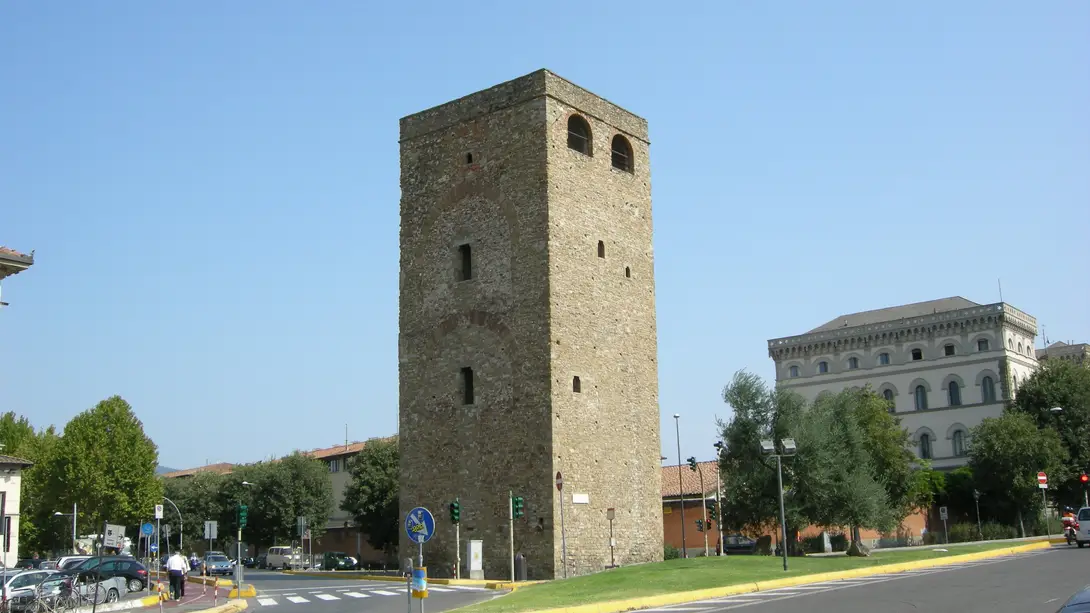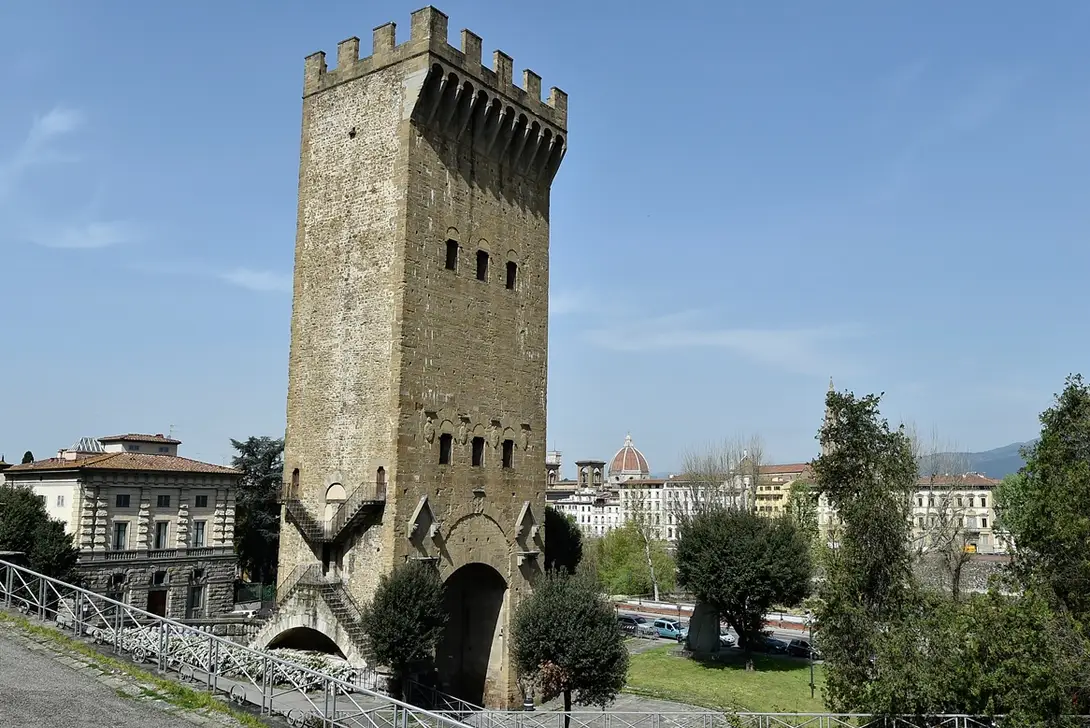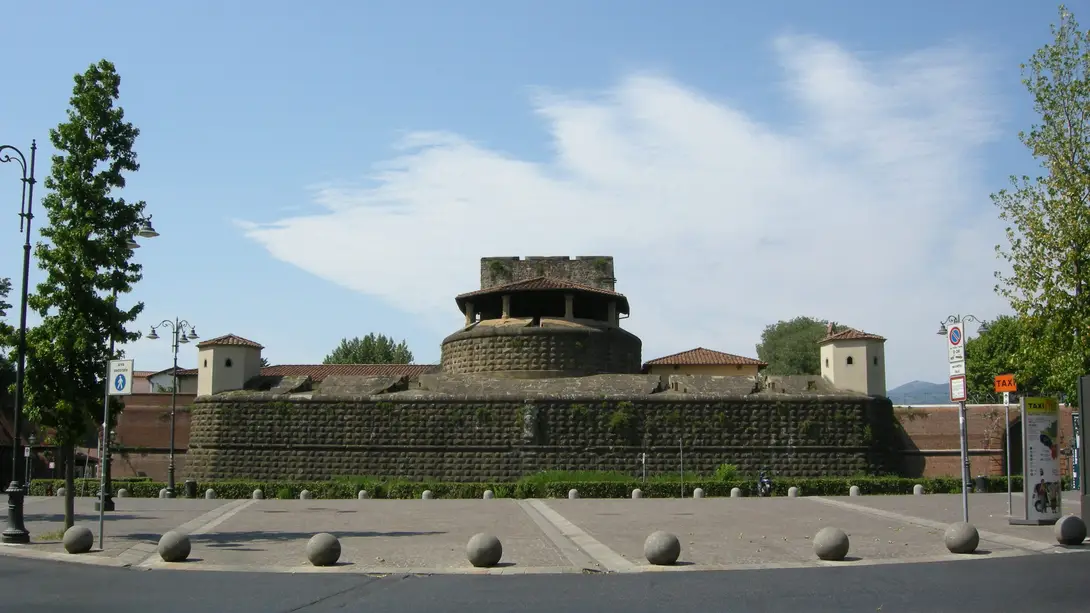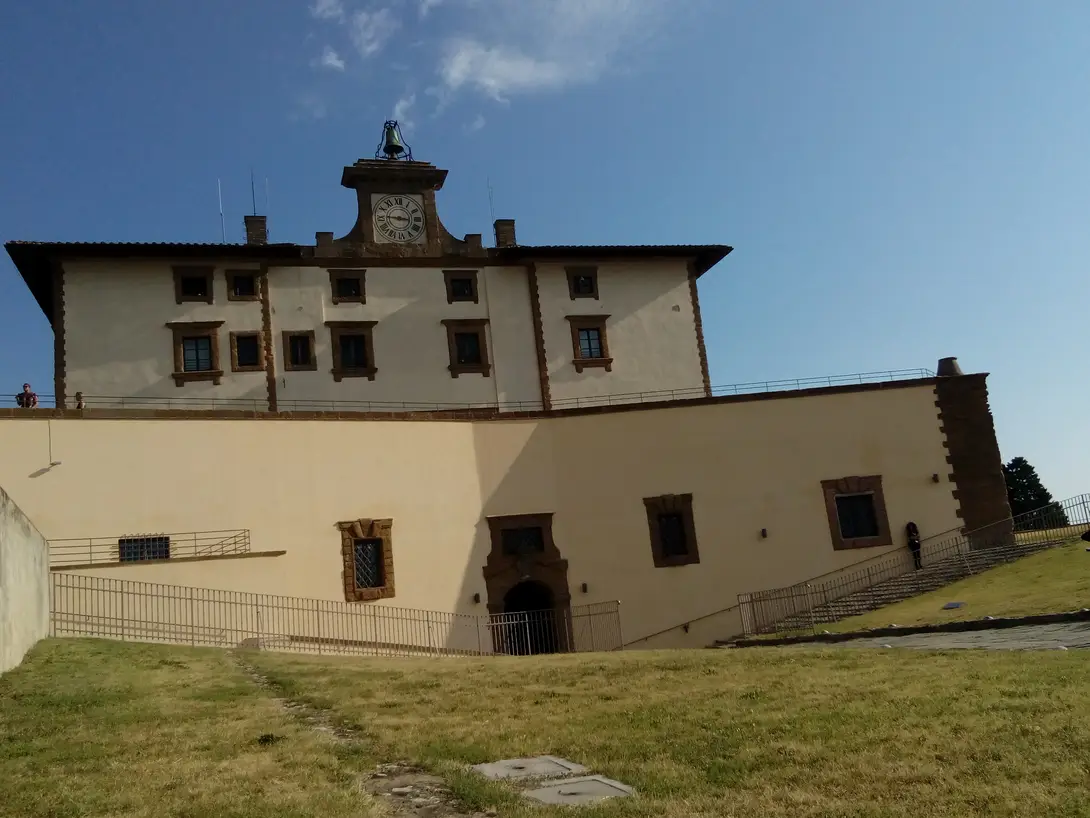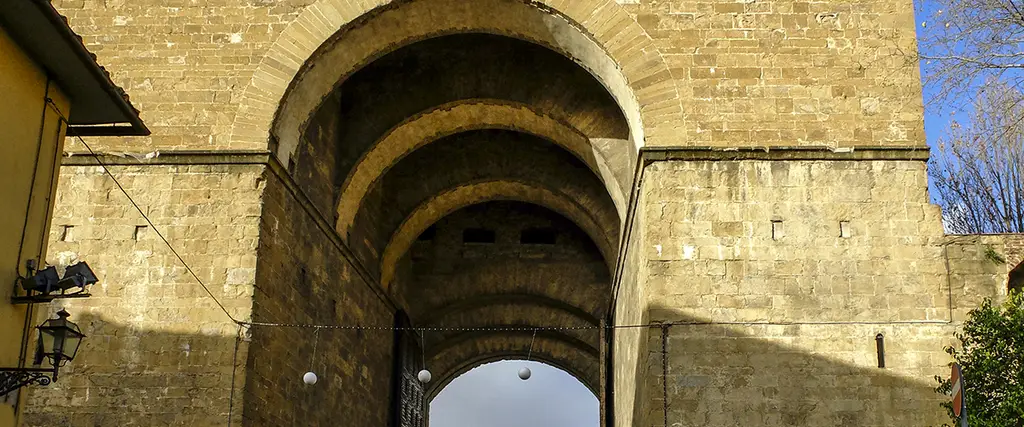
Towers, gates, fortresses
The fortification system of Florence has been frequently transformed during the past. There have been more city walls (from the Roman to the Medieval ones by Arnolfo di Cambio) with a lot of towers and gates, while during the sixteenth century the two city fortresses were also built.
It is still possible to see some traces of Roman walls - corresponding to the area delimited by via Tornabuoni, via Cerretani, via del Proconsolo, via Porta Rossa-Condotta - and of the Commune period (1170) built along today’s via de’ Fossi, via del Giglio, via de’ Pucci, via Bufalini, via Verdi and via Benci, but the most noticeable remains are the ones belonging to the last walls built by Arnolfo di Cambio between 1284 and 1333.
These last city walls were demolished on the mid-nineteenth century, to build the new ring road, viali di circonvallazione (between 1865 and 1871), when Florence became the provisional capital of Italy, nonetheless, the monumental gates were preserved. North of the Arno river: Porta alla croce in Piazza Beccaria, Porta San Gallo in piazza della Libertà, Porta a Faenza (then incorporated in the Fortezza da Basso), Porta al Prato.
South of the Arno: it is still possible to see a long part of the last walls (along via Belvedere south of Boboli Garden, and viale Francesco Petrarca) and some gates, such as Porta San Niccolò. This tower, recently opened to the public - but currently closed because of the coronavirus emergency - is the only one still conserving its previous height (115 ft). All the other ones have been lowered around 1530, being too vulnerable and, at the same time, on the top, cannons could be quickly hauled into position in order to defend the city.
The two sixteenth-century fortresses (Fortezza da Basso to the North and Forte Belvedere to the South) were connected to the Arnolfo city walls. The first fortress hosts fairs and exhibitions (guided tours, including the visit of the basement, are occasionally organized); Forte Belvedere is usually open in summer for art exhibitions (mostly contemporary art) and for guided tours including secret passages, as the Medici treasure room.
Discover all the details step by step!
Comune di Firenze
The places
Stages
Torre della Zecca Vecchia
The Zecca Vecchia Tower is part of the last city walls of Florence, built in the thirteenth century at the behest of the Florentine Government (Signoria), on a design by Arnolfo di Cambio. The name Zecca (Mint) reminds to the place where Florentine coins were minted, thanks to the use of forges operated by the flow of Arno River. In fact, the city Mint moved where the tower is now, from the previous location near Palazzo Vecchio to allow the building of the Loggia dei Signori.
It was part of the fortification system of Florence.
Torre San Niccolò
The tower of San Niccolò is in piazza Poggi. The gate, that has been isolated from the city walls, was erected in 1324 to defend the Oltarno quarter. It is the only tower in Florence that has not been “scapitozzata”, that is, lowered with respect to its original height.
It conserves a charming walkway that the Town Council has restored and made safe in order to open it to citizens and tourists. It was part of the fortification system of Florence.
A recommended guided tour for children and teenagers to enjoy a real journey into the past and unveil a new surprising perspective on Florence.
Fortezza da Basso
Designed by Antonio da Sangallo the Younger (1533-35), the Fortezza has been completely remodeled and is now an exhibition and conference center. This complex and prestigious environment combines charming and perfectly restored historic places (such as the Quartieri Monumentali - the Monumental Area - or the Polveriera) with modern pavilions, specifically built to increase the space availability, such as the Spadolini Pavilion and the more recently built Cavaniglia Pavilion.
Forte di Belvedere
The foundation stone of the Forte di San Giorgio, better known as Forte di Belvedere, was laid in1590, whenFerdinand I wasGrand Duke, and it was built to a design by Bernardo Buontalenti.
Besidesdefending the city from a possible outside attack, a role it was never called upon to fulfil, in the event of danger from within it could be reached from Palazzo Pitti via the Boboli Gardens. Breathtaking panoramas from here!
Inside the fort is the elegant Palazzina di Belvedere, which predates the fort and was probably designed by Bartolomeo Ammanati around 1570. The Palazzina becamethe ‘strongroom’ of the Medici,whokept their treasures in the bottom of a well inside the building; anyone who tried to force the locks would trigger a trap that would impale them.
The building is elegant and in a wonderful, panoramic position, it often hosts art exhibitions.
